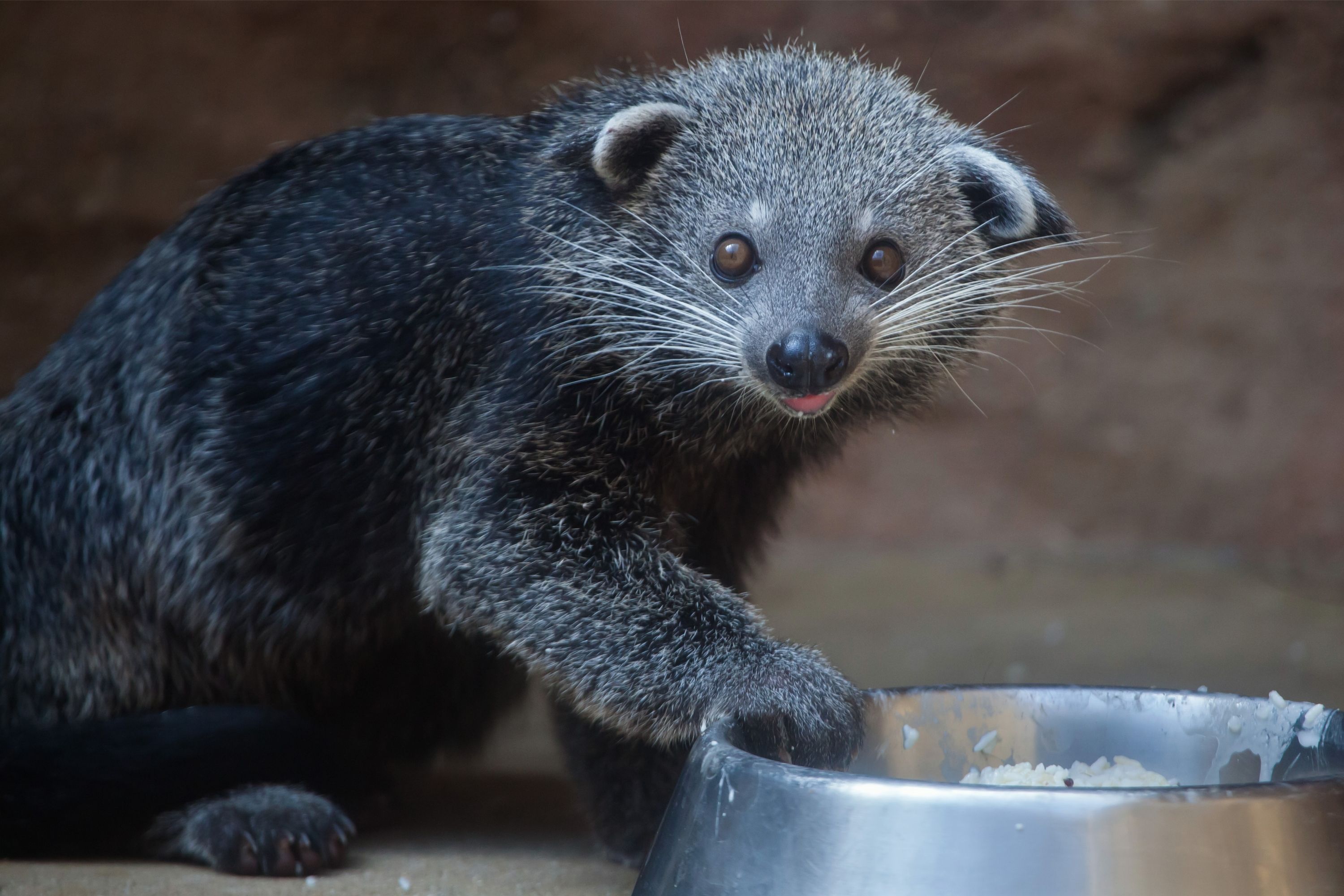Binturong
(Arctictis binturong)

Description
The binturong (Arctictis binturong) also known as the bearcat, is a viverrid native to South and Southeast Asia. It is uncommon in much of its range, and has been assessed as Vulnerable on the IUCN Red List because of a declining population trend that is estimated at more than 30% since the mid-1980s. The binturong is the only living species in the genus Arctictis. Viverra binturong was the scientific name used by Thomas Stamford Raffles in 1822 for a binturong collected in Malacca. The scientific name of the genus Arctictis was coined by Coenraad Jacob Temminck in 1824. Arctictis is a monotypic taxon; its morphology is similar to that of members of the genera Paradoxurus and Paguma. The binturong is long and heavy, with short, stout legs. It has a thick coat of coarse black hair. The bushy and prehensile tail is thick at the root, gradually tapering, and curls inwards at the tip. The muzzle is short and pointed, somewhat turned up at the nose, and is covered with bristly hairs, brown at the points, which lengthen as they diverge, and form a peculiar radiated circle round the face. The binturong occurs from India, Nepal, Bangladesh, Bhutan, Myanmar, Thailand, Malaysia to Laos, Cambodia, Vietnam and Yunnan in China, and Sumatra, Kalimantan and Java in Indonesia to Palawan in the Philippines. It is confined to tall forest. In Assam, it is common in foothills and hills with good tree cover, but less so in the forested plains. It has been recorded in Manas National Park, in Dulung and Kakoi Reserved Forests of the Lakhimpur district, in the hill forests of Karbi Anglong, North Cachar Hills, Cachar and Hailakandi Districts. In Myanmar, binturongs were photographed on the ground in Tanintharyi Nature Reserve at an elevation of 60 m (200 ft), in the Hukaung Valley at elevations from 220-280 m (720-920 ft), in the Rakhine Yoma Elephant Reserve at 580 m (1,900 ft) and at three other sites up to 1,190 m (3,900 ft) elevation. In Thailand's Khao Yai National Park, several individuals were observed feeding in a fig tree and on a vine. In Laos, they have been observed in extensive evergreen forest. In Malaysia, binturongs were recorded in secondary forest surrounding a palm estate that was logged in the 1970s. In Palawan, it inhabits primary and secondary lowland forest, including grassland forest mosaic from sea level to 400 m (1,300 ft).
Taxonomic tree:







